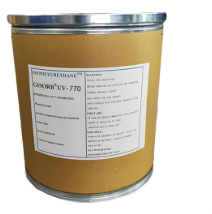Key Considerations for PVC Stabilizer Selection
Understanding Heat Resistance Requirements
Picking out the right PVC stabilizer really comes down to knowing how well it handles heat. After all, we need materials that won't break down when faced with tough environmental situations. The automotive and construction sectors are prime examples where PVC gets hit with lots of heat over time. Think about car interiors baking in summer sun or building components exposed to constant sunlight. Knowing exactly what kind of temperatures our PVC products will face during their entire life makes a big difference in finding the right stabilizer that keeps things stable even when conditions get rough. Want some direction? Check out the guidelines from ASTM, those folks at the American Society for Testing and Materials have set clear standards for measuring heat resistance in PVC materials across different applications.
Assessing Environmental Exposure Factors
When looking at what kind of environment a PVC stabilizer needs to handle, this really matters for how well it performs in the long run and stays sustainable. Things like sunlight exposure, humidity levels, and contact with various chemicals all play a role in how effective the stabilizer actually ends up being. Getting real numbers about how long and how strong these factors are makes sense, whether we check out field research findings or look at what the manufacturers themselves have documented. Pay close attention to traits such as UV protection capabilities and ability to stand up against different chemicals when making assessments. This helps pick out stabilizers that truly guard against breakdown caused by weathering effects throughout their service life in actual applications.
Determining Load-Bearing Applications
When working with PVC materials meant to support weight or pressure, picking the right stabilizers makes all the difference in how well they hold up over time. The first step is figuring out exactly what kind of forces these products will encounter in their actual use environment. This information guides manufacturers toward stabilizers that won't let the material deform or fail when subjected to stress. Looking at lab results from tensile tests alongside case studies from similar industrial applications gives a clearer picture of whether a particular stabilizer works for demanding situations. Getting this right means better performance from day one and longer lasting products overall. Most importantly, it avoids costly failures down the road that could happen if regular stabilizers were used instead of ones specifically formulated for heavy duty applications.
Comparing Stabilizer Formulations
Calcium-Zinc (Ca-Zn) Stabilizers for Eco-Friendly Solutions
The rise of Calcium-Zinc or Ca-Zn stabilizers has been pretty noticeable lately because these compounds don't contain toxins and work great with our environment. Manufacturers have started switching from dangerous alternatives like lead-based stabilizers to these safer options. Looking at recent research, it's clear why companies are making this change. These stabilizers fit right into modern green standards and cut down on pollution problems across the board. Take a look at how they're applied in things like PVC electrical cables and all sorts of flexible materials. They keep everything stable during production while avoiding the health risks that come with traditional lead-containing formulas. Many plants report better worker safety records since making the switch too.
Barium-Zinc (Ba-Zn) Stabilizers for Thermal Stability
Barium Zinc or Ba-Zn stabilizers stand out because they handle heat really well in PVC products. Most industry studies point to these stabilizers performing better than alternatives when things start breaking down from excessive heat exposure. These compounds actually protect materials from getting damaged by high temperatures, which is why manufacturers prefer them for stuff like electrical cable coverings and those pliable floor mats we see everywhere nowadays. Getting good results requires paying attention to how they're processed though. Things like temperature control during manufacturing make all the difference in getting the most out of Ba-Zn formulas.
Organic Stabilizers for Low-Toxicity Compliance
Organic stabilizers play a really important role in situations where low toxicity matters, especially in things like food packaging materials. These substances meet various industry standards that back their use in delicate contexts. When picking out organic stabilizers, manufacturers often face tradeoffs between how well they work versus how safe they are. Most options strike some kind of balance between being effective enough while still keeping environmental concerns in check. Take epoxidized soybean oil for instance. This substance is pretty widely used because it keeps PVC products structurally sound even after processing, yet remains safe enough to touch food items directly. Many companies prefer this option precisely because it meets both functional requirements and regulatory expectations at the same time.
Evaluating Processing Conditions
Optimizing for Extrusion vs. Injection Molding
When it comes to manufacturing, picking between extrusion and injection molding makes all the difference in getting good results from PVC stabilization work. These different methods need their own special stabilizer mixes so the finished goods actually hold up and look right. Take extrusion for instance this continuous process works great for making things like pipes and window frames. Industry manuals point out that extrusion needs stabilizers that keep everything flowing smoothly without interruptions during production runs. Injection molding tells another story altogether. This technique handles complicated shapes where dimensions matter a lot, usually needing stabilizers that handle quick cooling without problems. How these processes are run affects not just how products look when they come off the line but also how long they'll last in real world conditions. Getting the stabilizer mix right matters a ton for both methods if manufacturers want quality end products.
Melt Flow Characteristics and Stabilizer Efficiency
Getting a good grasp on the melt flow index (MFI) matters quite a bit when evaluating how well PVC stabilizers work during processing operations. Basically, MFI measures how easily melted PVC flows, and this directly affects the final product's quality. Lower MFI numbers usually mean higher quality materials that last longer in service. Research in material sciences shows there's a clear link between properly optimized melt flow rates and improved properties such as stronger tensile strength and better impact resistance. When looking to get the most out of melt flow characteristics, manufacturers need to pick stabilizer formulas that match their production speeds and target product qualities. Take adjustable stabilizers for instance these let plant operators tweak the MFI settings according to what specific products require, so they can maintain consistent performance levels even when switching between different applications or batch requirements.
Cooling Rate Compatibility
How fast the PVC cools down during processing really affects how stable and performant the final material turns out. When cooling isn't done right, problems pop up all over the place - think warped shapes or parts that don't fuse properly together, which basically ruins the whole product. A bunch of real world tests back this up, showing that when companies match their cooling methods with certain kinds of stabilizers, those pesky processing issues get cut down. Take for example when production lines need quicker cooling times. They tend to go for stabilizers that handle heat release faster, so surfaces stay smooth without blemishes. The bottom line is that picking stabilizers that work well with different cooling setups lets manufacturers improve not just looks but also strength and general reliability of their PVC goods. Most plants I've worked with find this approach pays off in meeting both customer demands and long term durability standards.
Regulatory Compliance and Safety Standards
Navigating RoHS and REACH Requirements
PVC manufacturers need to know what RoHS and REACH regulations actually mean for their operations. RoHS restricts dangerous materials in electronics while REACH controls chemical substances across industries. When companies ignore these rules, they face serious problems accessing key markets and might get hit with hefty fines too. A real-world consequence? Products that don't comply simply won't make it onto shelves in Europe, where regulators take material safety very seriously. Getting everything right means picking the correct stabilizers and formulas for PVC production that fit within both sets of guidelines. This ensures products can travel freely around the world without running into legal roadblocks at borders or distribution centers.
Food-Grade Certifications for Specific Applications
Some PVC products need special food grade approvals when they come into contact with actual food stuffs. Regulations from bodies like the FDA set pretty tough rules about what kind of PVC materials can be used safely in food contexts. Take food packaging for instance the additives mixed into the PVC during production absolutely cannot leach anything toxic into whatever is being wrapped. Getting the right stabilizer mix is really important here because it makes all the difference between a product that passes safety tests and one that ends up in the trash bin. Companies making these items have to pick stabilizers that pass both environmental impact checks and food safety requirements if they want their products to actually work in grocery stores and restaurants across the country.

Supplier Collaboration Strategies
Technical Support Expectations
Setting up good technical support standards with our suppliers really makes a difference in how products get developed. We need to make sure they know what we expect from them, things like quick responses when we have questions or help fixing problems when something goes wrong. Keeping lines of communication open means issues don't sit around unresolved, which helps keep everything moving forward without unnecessary delays. Industry folks who've been around a while will tell anyone that working closely with suppliers often leads to better innovations in stabilizer formulas. When companies actually collaborate on solving problems together instead of just handing off work, everyone gains new insights. Our partnerships let us tap into supplier knowledge that we wouldn't otherwise have access to, resulting in creative solutions specifically designed for the unique requirements of PVC manufacturing operations.
Custom Formulation Development Processes
Creating custom formulas for PVC stabilizers means getting really specific about what works best for different applications. When companies want to develop these special blends, they usually start by figuring out exactly what the application needs and then digging deep into how different materials behave. Take Orbia's Alphagary as an example. They've had some real success stories where their customized stabilizer solutions solved problems that standard products couldn't handle in niche markets. The suppliers aren't just handing over ingredients though. They actually work closely with customers to find the right mix of components that actually work well together instead of just randomly combining things. This teamwork leads to products that check all the boxes for specs while delivering better performance and lasting longer than off-the-shelf alternatives.
Quality Assurance Protocols
Making sure PVC stabilizers hit those tough industry standards starts with solid quality control practices. Suppliers need to put their products through proper testing and verification processes before they ever reach the market. The whole process covers everything from checking raw materials right through to evaluating finished products. Regular inspections throughout production keep things consistent between batches, something really important when working with tricky PVC formulations. When companies stick to good quality control procedures, their stabilizers work better and match what customers expect in this competitive marketplace. This attention to detail ultimately protects product quality and keeps clients happy with reliable results over time.
FAQ
Why is heat resistance important in PVC stabilizers?
Heat resistance is crucial to ensure that PVC materials can withstand high temperatures, especially in industries such as automotive and construction.
What factors should be considered for environmental exposure?
Factors such as UV radiation, moisture, and chemical exposure are critical as they can affect the long-term performance and sustainability of the PVC stabilizer.
What is the role of Calcium-Zinc stabilizers?
Calcium-Zinc (Ca-Zn) stabilizers are favored for their eco-friendly attributes and effective stabilization without the associated toxicity of lead-based stabilizers.

